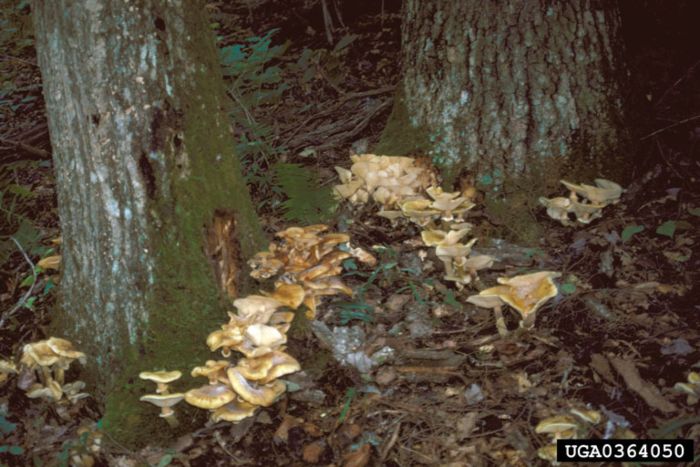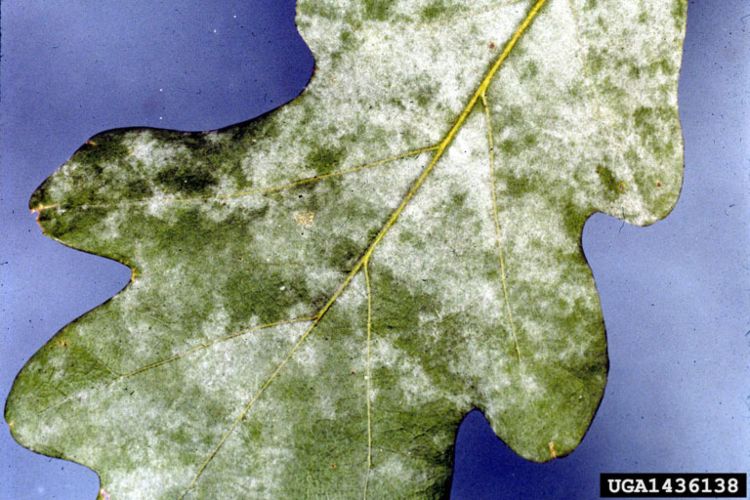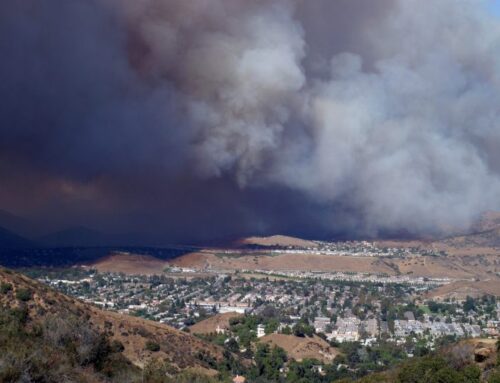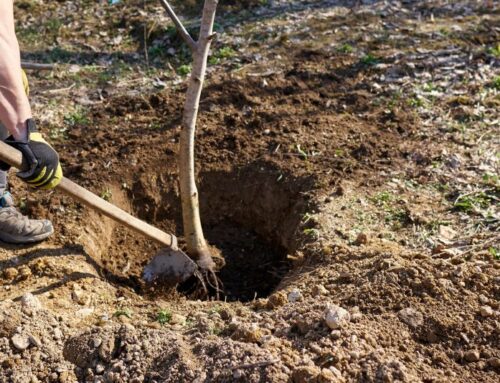
In the vast realm of arboriculture, it is difficult to match the resilience and grandeur of oak trees. However, these majestic giants are not immune to the threats posed by various diseases. In this extensive guide, we explore the world of Oak Tree Diseases, aiming to equip both tree enthusiasts and arborists alike with insights on the causes, symptoms, and available treatments for a diverse array of ailments. From oak wilt to powdery mildew, armillaria root rot to sudden oak death, we’ll dig into the complexities of these diseases to gain a deeper understanding of oak tree health.
Introduction to Oak Tree Diseases
Oak trees stand silent and stoic, often serving as keystone species and pillars of biodiversity. Yet, these strong trees face a myriad of challenges from microbial invaders. Identifying and treating these diseases is not just an arborist’s task but a collective responsibility to preserve the ecological balance that oak trees uphold. In the sections below, we explore the nuances of diseases like oak wilt, armillaria root rot, oak leaf blister, bacterial leaf scorch, oak anthracnose, hypoxylon canker, powdery mildew, and sudden oak death. And always keep in mind that early detection and prompt intervention are crucial to safeguard the well-being of these iconic trees.
Dying Oak Tree Symptoms and Signs
Knowing how to recognize the subtle signs of distress in oak trees is a skill that every tree owner can cultivate to help their trees. Ailing oaks often exhibit symptoms that, when identified early, can prompt timely action to mitigate further damage. One of the telltale signs of trouble is leaf discoloration—a departure from the usual vibrant green to hues of yellow or brown. However, the story told by the leaves is just the beginning. Drooping, wilting, or prematurely falling leaves may signal an underlying issue, requiring a closer inspection of the tree’s overall health. Bark abnormalities, such as cracking or peeling, might indicate more profound problems, while the presence of cankers and lesions warrants a careful examination for diseases like hypoxylon canker.
The structural integrity of an oak tree is often compromised when it succumbs to diseases. Watch for signs of weakened branches, visible dieback, or sudden leaf loss in specific areas of the canopy. Additionally, keep a keen eye on the overall vigor of the tree. Unexplained reductions in growth, sparse foliage, and a general decline in the tree’s appearance can be indicative of underlying health issues. By honing in on these visual cues, tree owners can become proactive stewards of their oaks, taking the necessary steps to address diseases before they inflict irreparable damage.
Oak Wilt

Signs & Symptoms: Decoding Oak Wilt’s Stealthy Onset
Oak wilt’s initial signs often manifest in the leaves. Look for wilting and browning, starting from the leaf margins and progressing inward in a characteristic V-shaped pattern. As the disease advances, affected trees rapidly shed their leaves, resembling the appearance of a premature autumn. Vigilant observation is crucial, since swift response is essential to prevent the spread of oak wilt.
Causes: The Underground Culprit
Oak wilt primarily spreads through interconnected root systems. The fungus, Ceratocystis fagacearum, invades the tree’s water-conducting vessels, hindering the transport of water and nutrients. Red oak varieties are more susceptible, sometimes succumbing within weeks. The fungus can also be transmitted by sap-feeding beetles, creating potential aboveground infection points. Understanding the dual threat—below ground through root systems and above ground via beetles—is crucial in devising effective prevention and control strategies.
Treatments & Prevention Methods: Safeguarding Your Oaks
– Swift removal and destruction of infected trees.
– Sever root grafts through trenching to create a barrier against underground transmission.
– Fungicidal treatments of chlorothalonil in high-risk areas, coupled with other proactive strategies.
– Avoid pruning oak trees during the growing season to prevent attracting sap-feeding beetles.
– Sterilize equipment for proper sanitation.
– Foster tree diversity to mitigate the impact of oak wilt.
Armillaria Root Rot

Signs & Symptoms: Silent Invasion Below Ground
Symptoms of Armillaria root rot often go unnoticed until the decay is advanced. Look for wilting, yellowing, and premature leaf drop. Cankers may form at the base of the trunk, accompanied by a distinct mushroom growth near the tree base, particularly during wet conditions.
Causes: The Fungal Invader
Caused by various Armillaria species, this is an opportunistic disease because the fungus targets weakened or stressed trees. It attacks the root system, impeding water and nutrient absorption. Once established, the fungus forms dark shoestring-like structures called rhizomorphs, facilitating its spread to nearby trees.
Treatments & Prevention Methods: A Multifaceted Approach
– Remove and destroy infected trees.
– Enhance tree vigor through proper watering and fertilization.
– Apply fungicides preventively in high-risk areas.
– Improve soil drainage to reduce favorable conditions for the fungus.
– Plant resistant tree species when possible.
Oak Leaf Blister

Signs & Symptoms: Distinctive Leaf Lesions
Oak leaf blister presents itself through raised, blister-like lesions on leaves. These spots may vary in color from light green to yellow or reddish. The affected leaves can become distorted, but severe leaf drop is rare. If the leaves drop after summer, there is limited harm to the tree because dormancy is just around the corner. But if there is severe leaf drop earlier on in the growing season and the tree fails to put out new leaves, the tree will experience diminished photosynthesis and possibly increased stress levels.
Causes: Fungus in the Family
The fungus Taphrina caerulescens is responsible for oak leaf blister. It infects emerging leaves in spring, causing the characteristic raised lesions. The disease is often more prevalent in wet, cool conditions and is spread by wind and rain.
Treatments & Prevention Methods: Timing is Key
– Fungicidal sprays of chlorothalonil during bud break in early spring.
– Promote good air circulation through proper pruning.
– Raking and removing fallen leaves to reduce overwintering spores.
Bacterial Leaf Scorch

Signs & Symptoms: Gradual Leaf Wilt
Bacterial leaf scorch manifests as a gradual wilting of leaves, starting at the leaf margins and progressing inward. Browning along the veins, akin to scorching, is a key indicator. The symptoms typically appear during the growing season.
Causes: Bacterial Invasion
Xylella fastidiosa, a xylem-inhabiting bacterium, is the cause of bacterial leaf scorch. It clogs the tree’s water-conducting vessels, blocking off water transport and leading to the characteristic scorching symptoms.
Treatments & Prevention Methods: Managing Spread
– Pruning infected branches to reduce bacterial load.
– Antibiotic treatments of oxytetracycline for severe cases.
– Insect control to minimize vectors.
– Planting resistant tree varieties where possible.
Oak Anthracnose

Signs & Symptoms: Browned Edges and Twig Dieback
Oak anthracnose manifests as irregular, browned leaf edges, leaf loss, and twig dieback. Young leaves are particularly vulnerable because they haven’t yet fully developed their cuticles, or protective, waxy leaf coverings. The disease often appears in cool, wet conditions during spring and in fall when the disease takes advantage of senescing leaves. Severe leaf loss early in the growing season that isn’t followed by a second leaf flush may stress out the tree and cause secondary pest or disease outbreaks.
Causes: Fungal Foe
Various fungi in the genus Apiognomonia cause oak anthracnose. Infection usually occurs during wet weather, and spores are spread by wind, splashing raindrops, or irrigation.
Treatments & Prevention Methods: Timely Intervention
– Fungicidal treatments of phosphorous acid or propiconazole in fall or spring before twig infection.
– Pruning to improve air circulation.
– Proper sanitation by removing and destroying infected leaves.
– Promoting overall tree health through proper care.
Hypoxylon Canker

Signs & Symptoms: Silent Tree Erosion
Hypoxylon canker’s initial onset is often subtle. Look for bark discoloration, particularly in shades of gray or brown. Cankers appear sunken, and the fungus produces distinctive black spore structures called perithecia. As the tree weakens, leaves will yellow and wilt because the cankers inhibit water transport between the roots and the canopy.
Causes: Attacking Weakened Oaks
Biscogniauxia atropunctata (formerly Hypoxylon atropunctatum) and related fungi are opportunistic pathogens, targeting oaks already stressed by factors like drought, compaction, or other diseases. Once established, the fungus spreads internally, disrupting water transport. Because the disease only targets weakened trees, proper tree care to maintain tree vigor is particularly essential to prevent Hypoxylon canker.
Treatments & Prevention Methods: Strengthening Defenses
– Promote overall tree health through proper watering and fertilization.
– Prune and remove dead or infected branches.
– Fungicidal preventative treatments.
– Prevent stress factors through proper tree care.
Powdery Mildew

Signs & Symptoms: White Powdered Coating
Powdery mildew presents as a white, powdery substance on leaves, resembling talcum powder. The affected foliage may become distorted, and severe infestations can lead to premature leaf drop. The powdery coating inhibits sunlight absorption by the leaf, so photosynthesis is reduced and the tree may experience stunted growth and defense abilities.
Causes: Fungal Intruders
Various fungi in the order Erysiphales cause powdery mildew. Unlike many fungal diseases, powdery mildew thrives in dry conditions and does not require water for spore germination.
Treatments & Prevention Methods: Keeping It at Bay
– Neem oil or myclobutanil fungicides for control.
– Proper spacing and pruning for improved air circulation.
– Regularly monitoring and promptly addressing outbreaks.
Sudden Oak Death

Signs & Symptoms: Wilting, Bleeding, and Death
Sudden oak death manifests as wilting leaves, bleeding cankers, and ultimately, tree death. Look for dark, oozing cankers on the trunk. Leaves may exhibit dark spots and overall browning, leading to canopy dieback. The disease can progress rapidly, sometimes killing the tree in as little as a month, hence the name sudden oak death.
Causes: Waterborne Oomycete
Phytophthora ramorum, an oomycete pathogen, causes sudden oak death. The disease spreads through water, infecting the bark and cambium, leading to extensive canker formation. The cankers kill sap and water-conducting vessels, which then cause leaf wilt and canopy death.
Treatments & Prevention Methods: Complex Strategies for Control
– Quarantine measures to limit the disease’s spread.
– Removal and destruction of infected trees.
– Fungicidal treatments of phosphorous acid for high-risk areas.
– Monitoring and management of water sources to prevent spread.
Prevention is the Key
Understanding the unique characteristics, causes, and management strategies for each of these oak tree diseases is crucial for preserving the health and vitality of these magnificent trees. However, the true power lies in proactive measures – maintaining overall tree health, having proper tree fertilization, spotting early symptoms, and implementing preventive strategies. Prioritizing simple yet effective care practices ensures our oak trees stand resilient against diseases, preserving their grandeur for years to come.
Got questions? Reach out to our team of professional, certified arborists for help or learn more about our tree pest and disease services!





